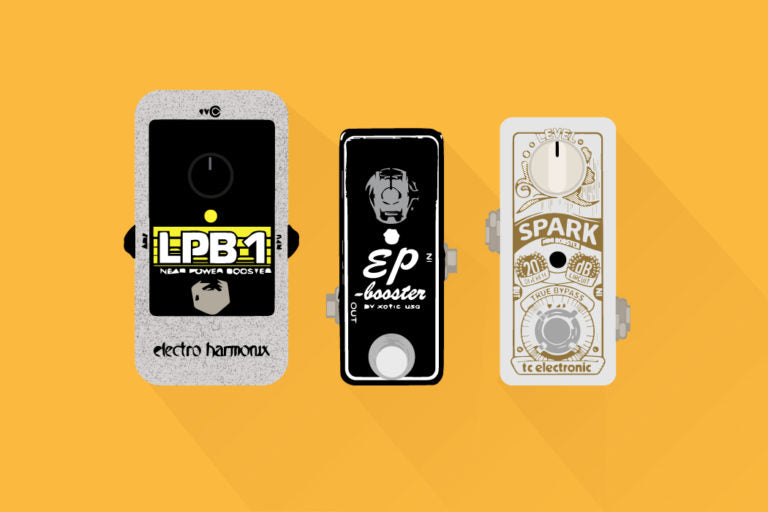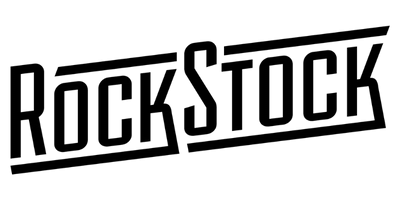Your Cart is Empty
FREE SHIPPING ON ALL DOMESTIC ORDERS OVER $50
FREE SHIPPING ON ALL DOMESTIC ORDERS OVER $50
Utility Pedals
Accesories

What Are Boost Pedals And Why Do You Need One?
September 14, 2020 6 min read
I love boost pedals. I recently downsized my pedalboard for at home playing, and even though it only has room for 5 pedals, one of those is a boost. The others are an overdrive and then three delays, because who doesn’t need more delays on their pedalboard?
Pro tip: Set an analog delay to a good quarter note tempo. Then place a tap tempo equipped delay after it set at the same tempo, but dotted eighth notes. Enjoy a really fun gallop delay~
But back to boost pedals. Boost pedals have many uses and come in many flavors. Some are meant to enhance your bassline tone (like an EP style boost) while adding volume. Some are clean boosts that add volume but not gain. Some are designed to add just a bit more gain without coloring your tone. And some add treble to help you cut through the mix during solos (treble boosts).
We’ll take a look at all of these and why they’re a great addition to your pedalboard
What Does a Boost Pedal Do?
Many boost pedals are one knob jobs (trademark pending). The circuit does what it does, and you can dial that up as much as sounds good to your ears. What that is depends on the style of boost.
If you ever got a chance to play the Rock Stock Boostasaurus we used to make, you know that it adds gain really early on. On the converse, true clean boosts don’t add gain/breakup until they’re turned way up. And that does vary depending on your amp and pickups.
(By the way, if you have any interest in us bringing back the Boostasaurus I’d love to hear from you.)
When you put a boost pedal on your pedalboard directly in front of a tube amp it’s going to push the amp. In low headroom* amps (amps with low wattage) that will result in extra breakup. In higher wattage amps it does a similar thing, to a lesser degree. Because higher wattage amps have more headroom, you’ll get less breakup until you crank the boost. Typically.
Pickups also have an impact on how your boost reacts, just like they do in overdrives. Humbuckers will experience more gain in boosts than single coil pickups.
*Headroom is defined as the space an amp has before the clean signal breaks up, or naturally distorts, because the preamp tubes are being pushed. A 15 watt amp has very little headroom, and will start to distort at much lower volumes than a 50 watt amp, which will have much more headroom.
Are Boost Pedals And Buffers The Same Thing?
While some boost pedals have buffers, others are true bypass. Some have switchable buffers. But in general terms boost pedals are not the same thing as buffers.
Where Should You Put A Boost In Your Signal Chain?
Like literally everything else pedal related, it’s 100% subjective. Since boosts are dynamic pedals they’re “supposed” to be near the front of your signal chain.
I personally keep mine after my overdrives, and I typically use them as always-on pedals (depending on the situation). This is a little different than what I see others doing. But I prefer to use EP style boost pedals to fatten up my Class A, Vox style glassy tube tone. So for me it’s acting as a second preamp, which typically comes after your pedals. (it’s still before my modulation, delay, and reverb pedals though).
Remember, the pedal that comes after another does it’s thing to the previous pedal. This is the reason reverbs typically come after overdrives. You’re adding reverb to an overdriven signal. The reverse would be distorting a reverberated signal. Which is cool, but less practical for most musicians.
Let’s work under the assumption that you’re going to place your boost by your overdrives. Either before or after. With this setup your boost can do two things. Add more gain to your overdrive, or boost your overdrive.
Let’s say you have a low to medium overdrive pedal. These are my personal sweet spots. These are awesome, but I feel like I need more gain for my solos. In this instance I would put my boostbefore my overdrive. When you do this the knob on the boost acts as a second gain knob. It doesn’t act as well as a volume to push your amp into breakup, but combined with the overdrive it adds a good amount of gain.
So if you want to add more gain to your pedal, put your boost before the overdrive.
But let’s say you’re fine with your gain level but want more volume. Like, if you love your Raven Overdrive and just want to (wait for it...) boost it for a solo (nailed it), put your boost after the overdrive.
In this case the boost pedal’s knob will act as a volume as opposed to a gain. It will still push your amp, depending on your headroom, which can add gain potentially. But it keeps your overdrive pedal’s tone for the most part.*
*Remember that the circuity of the boost pedals will naturally add color to your tone. Think of them as baby preamps.
What Are The Different Kinds Of Boost Pedals?

I’m going to generalize a little bit here just for the sake of clarity. My giant caveat is that every pedal maker will have their own circuit that may or may not be based off a classic circuit, and may or may not be heavily modified.
I’m also going to try to stick to single knob boost pedals. I think once you start adding EQ and other features, the conversation gets a little muddier and a lot more complicated. Those pedals are awesome, but often fall into the preamp pedal categories. Which I’ll save mostly for another article.
EP Style Boosts
These are my mainstays. They’re based on the wonderful, non-true bypass tone of the old EchoPlex tape delay units, while adding boost and a bit of overdrive (depending on the pedal maker). I always have mine on regardless of what else is on my pedalboard.
What I love about these is the thickness and roundness they add without taking away the clarity and the ability to cut through the mix. My preferred method is to get my amp to a good volume just before breakup, and my EP style boost around 11 o’clock. It’ll break up if I dig in, but remain mostly clean otherwise.
The Xotic EP boost is the best example of an EP style circuit.
Clean Boosts
Clean boosts are an awesome way to add volume and clarity without adding gain. They cleanly boost your signal, hence the name. Clean boosts add clarity and punch to your tone, which is helpful when you have a long cable run.
(Though you should still consider a buffer pedal if your total cable run is over 20-25').
These pair well with vintage pedals that might not have the same volume output as your modern pedals. Same with vintage pickups that have lower outputs to start, which may have degraded over the years.
While not as traditional as overdrives like the Tube Screamer, clean boosts can be used to push high gain amps even further. You might actually find it more preferable. The clarity will add a tightness to your tone that an overdrive might not.
The TC Electronic Spark Mini Booster and Keeley Katana Preamp are good examples of clean boosts.
Treble Boosts
Treble boosts are exactly-ish what they sound like. They’re boost pedals that boost the treble and midfrequencies. They do add gain most of the time but much of the value is in the clarity you get. It’s worth noting that they’re not going to make your tone shrill.
If your amp is a little on the dark side though, they will add some complex brilliance and cut through. Put them after a fuzz pedal and they’ll create a cool clarity to a normally muddy fuzz tone.
The Xotic RC Booster is technically a preamp pedal, but also falls somewhat in the treble booster category. The Catalinbread Naga Viper and EHX Screaming Bird are good one knob treble boost examples.
Two In One Pedals
Because boost pedals have become so popular, a lot of pedal makers have combined boost pedals with their overdrive offerings. These boost overdrive combos have a given overdrive or distortion on one side (typically first in the path) and a boost on the other side.
The Earthquaker Devices Palisades and Keeley D&M Drive (made for Dan and Mick from That Pedal Show!) are two exceptional examples.
For the gear tweakers out there, combo pedals like the Fender Santa Ana and Ibanez TS808DX let you change the order of the overdrive and boost.
Subscribe
Sign up to get the latest on sales, new releases and more …









